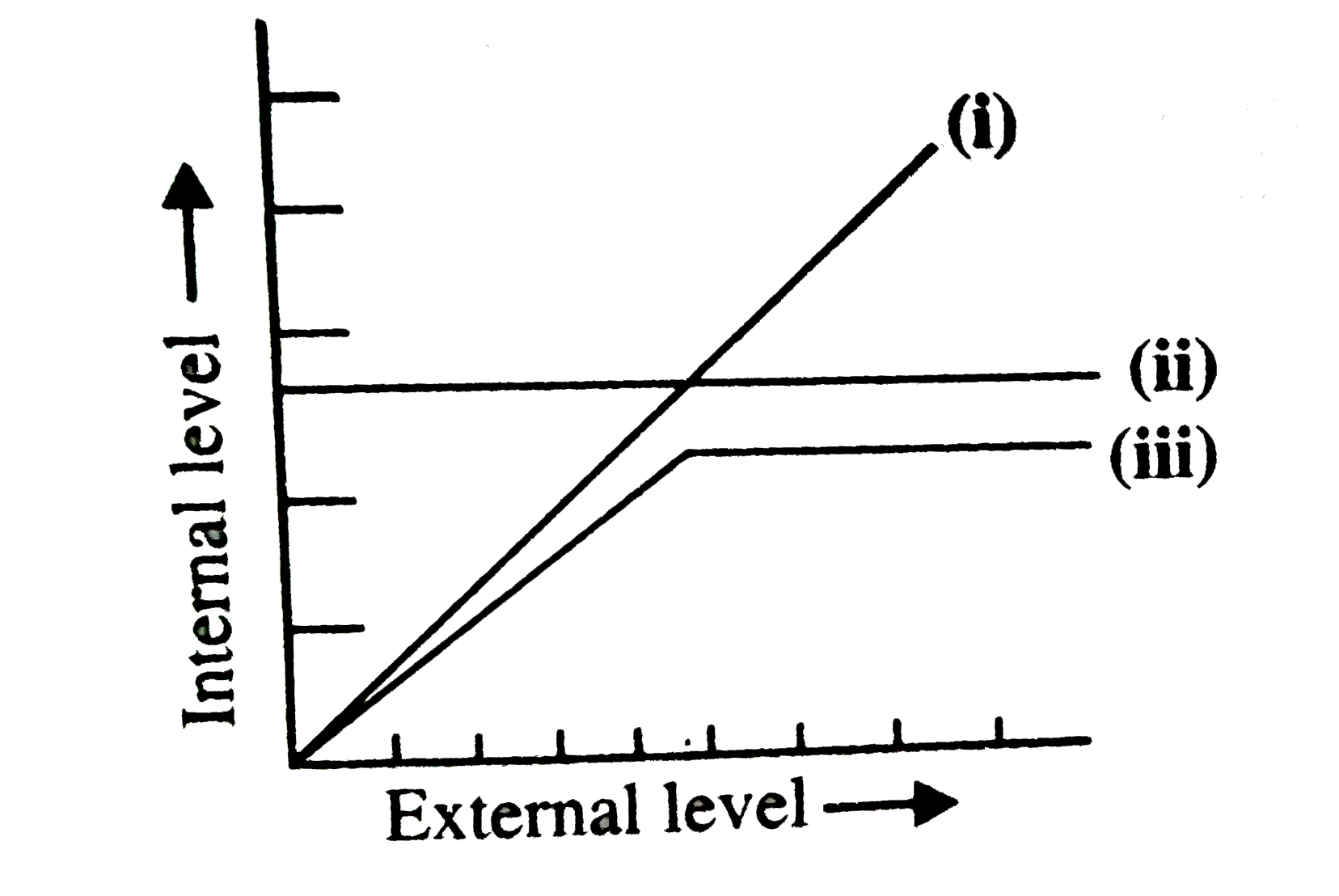Select the correct option, among Sc(III) , Ti(IV), Pd(II) and Cu(II) ions
all are paramagnetic
all are diamagnetic
Sc(III), Ti(IV) are paramagnetic and Pd(III), Cu(II) are diamagnetic
Sc(III), Ti(IV) are diamagnetic and Pd(II), Cu(II) are paramagnetic.
The correct Answer is:D
To determine the magnetic nature of the given ions (Sc(III), Ti(IV), Pd(II), and Cu(II)), we need to analyze their electronic configurations and the presence of unpaired electrons.
1. Identify the Atomic Numbers:
- Scandium (Sc) has an atomic number of 21.
- Titanium (Ti) has an atomic number of 22.
- Palladium (Pd) has an atomic number of 46.
- Copper (Cu) has an atomic number of 29.
2. Determine the Electronic Configurations:
- Sc(III): The electronic configuration of Sc is (Ar) 3d¹ 4s². In the +3 oxidation state, it loses 3 electrons (2 from 4s and 1 from 3d), resulting in (Ar) 3d⁰.
- Ti(IV): The electronic configuration of Ti is (Ar) 3d² 4s². In the +4 oxidation state, it loses 4 electrons (2 from 4s and 2 from 3d), resulting in (Ar) 3d⁰.
- Pd(II): The electronic configuration of Pd is (Kr) 4d¹⁰ 5s⁰. In the +2 oxidation state, it loses 2 electrons (from 4d), resulting in (Kr) 4d⁸ 5s⁰.
- Cu(II): The electronic configuration of Cu is (Ar) 3d¹⁰ 4s¹. In the +2 oxidation state, it loses 2 electrons (1 from 4s and 1 from 3d), resulting in (Ar) 3d⁹.
3. Count the Number of Unpaired Electrons:
- Sc(III): (Ar) 3d⁰ → 0 unpaired electrons (diamagnetic).
- Ti(IV): (Ar) 3d⁰ → 0 unpaired electrons (diamagnetic).
- Pd(II): (Kr) 4d⁸ 5s⁰ → 2 unpaired electrons (paramagnetic).
- Cu(II): (Ar) 3d⁹ → 1 unpaired electron (paramagnetic).
4. Determine the Magnetic Nature:
- Sc(III): Diamagnetic (no unpaired electrons).
- Ti(IV): Diamagnetic (no unpaired electrons).
- Pd(II): Paramagnetic (2 unpaired electrons).
- Cu(II): Paramagnetic (1 unpaired electron).
Conclusion:
The ions that are paramagnetic (having unpaired electrons) among the given options are Pd(II) and Cu(II).
Final Answer:
The correct options are Pd(II) and Cu(II).
---
- Scandium (Sc) has an atomic number of 21.
- Titanium (Ti) has an atomic number of 22.
- Palladium (Pd) has an atomic number of 46.
- Copper (Cu) has an atomic number of 29.
- Sc(III): The electronic configuration of Sc is (Ar) 3d¹ 4s². In the +3 oxidation state, it loses 3 electrons (2 from 4s and 1 from 3d), resulting in (Ar) 3d⁰.
- Ti(IV): The electronic configuration of Ti is (Ar) 3d² 4s². In the +4 oxidation state, it loses 4 electrons (2 from 4s and 2 from 3d), resulting in (Ar) 3d⁰.
- Pd(II): The electronic configuration of Pd is (Kr) 4d¹⁰ 5s⁰. In the +2 oxidation state, it loses 2 electrons (from 4d), resulting in (Kr) 4d⁸ 5s⁰.
- Cu(II): The electronic configuration of Cu is (Ar) 3d¹⁰ 4s¹. In the +2 oxidation state, it loses 2 electrons (1 from 4s and 1 from 3d), resulting in (Ar) 3d⁹.
- Sc(III): (Ar) 3d⁰ → 0 unpaired electrons (diamagnetic).
- Ti(IV): (Ar) 3d⁰ → 0 unpaired electrons (diamagnetic).
- Pd(II): (Kr) 4d⁸ 5s⁰ → 2 unpaired electrons (paramagnetic).
- Cu(II): (Ar) 3d⁹ → 1 unpaired electron (paramagnetic).
- Sc(III): Diamagnetic (no unpaired electrons).
- Ti(IV): Diamagnetic (no unpaired electrons).
- Pd(II): Paramagnetic (2 unpaired electrons).
- Cu(II): Paramagnetic (1 unpaired electron).
The ions that are paramagnetic (having unpaired electrons) among the given options are Pd(II) and Cu(II).
The correct options are Pd(II) and Cu(II).
Topper's Solved these Questions
- BOOK - NCERT FINGERTPS ENGLISHCHAPTER - THE D- AND F- BLOCK ELEMENTS EXERCISE - HOTS10videos
THE D- AND F- BLOCK ELEMENTS
- BOOK - NCERT FINGERTPS ENGLISHCHAPTER - THE D- AND F- BLOCK ELEMENTS EXERCISE - EXEMPLER PROBLEMS20videos
THE D- AND F- BLOCK ELEMENTS
- BOOK - NCERT FINGERTPS ENGLISHCHAPTER - SURFACE CHEMISTRYEXERCISE - Assertion And Reason15videos
SURFACE CHEMISTRY
- BOOK - NCERT FINGERTPS ENGLISHCHAPTER - THE P-BLOCK ELEMENTS EXERCISE - Assertion And Reason15videos
THE P-BLOCK ELEMENTS
Similar Questions
Knowledge Check
- Question 1 - Select One
Given graph represents the response of organisms to various abiotic factors. On this basis, select the correct option for (i), (ii) and(iii)
 A(i)(ii)(iii).ConformersRegulatorsPartial regulatorsB(i)(ii)(iii).RegulatorsPartial regulatorsConformersC(i)(ii)(iii).Partial regulatorsRegulatorsConformersD(i)(ii)(iii).RegulatorsConformersPartial regulators
A(i)(ii)(iii).ConformersRegulatorsPartial regulatorsB(i)(ii)(iii).RegulatorsPartial regulatorsConformersC(i)(ii)(iii).Partial regulatorsRegulatorsConformersD(i)(ii)(iii).RegulatorsConformersPartial regulators
Read the following and select the correct option :
A. Carnivora is a/an (i) that involves (ii) and Canidae.
B. Petunia and (iii). belongs to Family (iv)View SolutionMatch the following coloumns and select the correct option. a. Hibernation(Coloumn-I) - (i) Snails(Couloumn-II) b. Aestivation(Coloumn-I) - (ii) Many zooplanktons(Coloumn-II) c. Migration(Coloumn-I) - (iii) Polar bears(Coloumn-II) d. Diapause(Coloumn-I) - (iv) Siberian cranes(Coloumn-II)
View SolutionSelect the correct option for decreasing order of number of atoms.
(I) 2 gm of dihydrogen (II) 16 gm of sulphur
(III) 4 gm of oxygen gas (IV) 31 gm of phosphorusView SolutionSelect the option correctly identifies I, II,III and IV.
 View Solution
View SolutionMatch the columns and select the correct option from the following.
Column IColumn II(A)Wheat rust (I)Edible(B)Antibiotics(II)Puccinia(C)Mushroom(III)Sac fungi(D)Ascomycetes(IV)PenicilliumView SolutionMatch the columns and select the correct option.
ColumnIColumnIIA.Octopus(i)LimbsB.Crocodile(ii)Comb platesC.Catla(iii)ArmsD.Ctenoplane(iv)FinsView SolutionGiven below are the steps involved in parturition. Arrange them in proper sequence and select the correct option.
I. The induction of mild uterine contractions is called foetal ejection reflex.
II. Stronger uterine contractions causing the further release of oxytocin. III. Origination of signals from the fully developed foetus and placenta.
IV. Release of oxytocin from maternal pituitary
V. Expulsion of baby from the birth canal
(a) III , IV , I , II , V
(b) III, I , IV , II , V
(c) I, III , II , IV ,V
(d) II , IV , III, I,VView Solution


